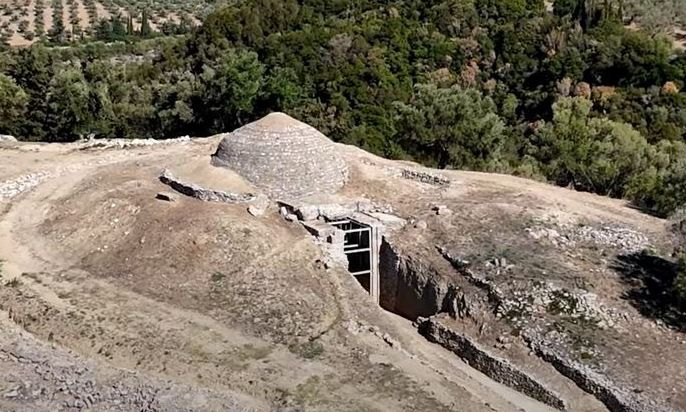Perched on a hill in a strategic location just 8 kilometers northeast of Kyparissia and 5 kilometers from the northwestern coast of Messenia, the archaeological site of Peristeria offers a window into one of mainland Greece’s most important Mycenaean centers. Thanks to the excavations led by renowned archaeologists Spyridon Marinatos and Georgios Korres during the 1960s and 1970s, the site earned the nickname “The Mycenae of Western Peloponnese.”
A Flourishing Mycenaean Hub
Peristeria reached the peak of its development during the early Mycenaean period (17th–16th century BCE) and continued to thrive until the 15th century BCE. During this time, the southern side of the hill was fortified with defensive walls, habitation increased, and a powerful local center emerged. This settlement was ruled by influential elites who controlled the region’s wealth and demonstrated openness to new cultural influences of the era.
Their status and authority are reflected in the abundance of luxurious grave goods—crafted from gold and other precious or semi-precious materials—unearthed mainly in the site’s monumental tholos (beehive) tombs.
Layers of History Beneath the Hill
The earliest constructions on Peristeria’s hill date back to around 2200 BCE, particularly around the large, reconstructed tholos tomb. Among the most significant finds is a small, gold-rich tomb—named for the large number of gold objects discovered within. Nearby, in a multi-room building adjacent to the tomb, archaeologists uncovered a variety of household items, giving insight into daily life in the settlement.
A Glimpse into Life and Death in Mycenaean Times
To the west of the hill lies the third tholos tomb, the smallest of the three, with a diameter of 6.9 meters. Although only a two-meter-high section of its dome survives, the tomb dates to around 1200 BCE and contained some striking artifacts: a 13.5 cm tall golden cup, numerous gold leaves, and ornate gold jewelry. The discovery of military equipment in the tomb points to the warrior status of at least one of its occupants.
A fourth tholos tomb, located about 100 meters south of the main archaeological area, stood out for a different reason. Unlike the others, it contained no metal objects but had been used for over 15 burials. Archaeologists believe this was the cemetery for the general population of Peristeria. This finding is particularly significant, as it suggests that even ordinary people had access to this monumental burial style.







